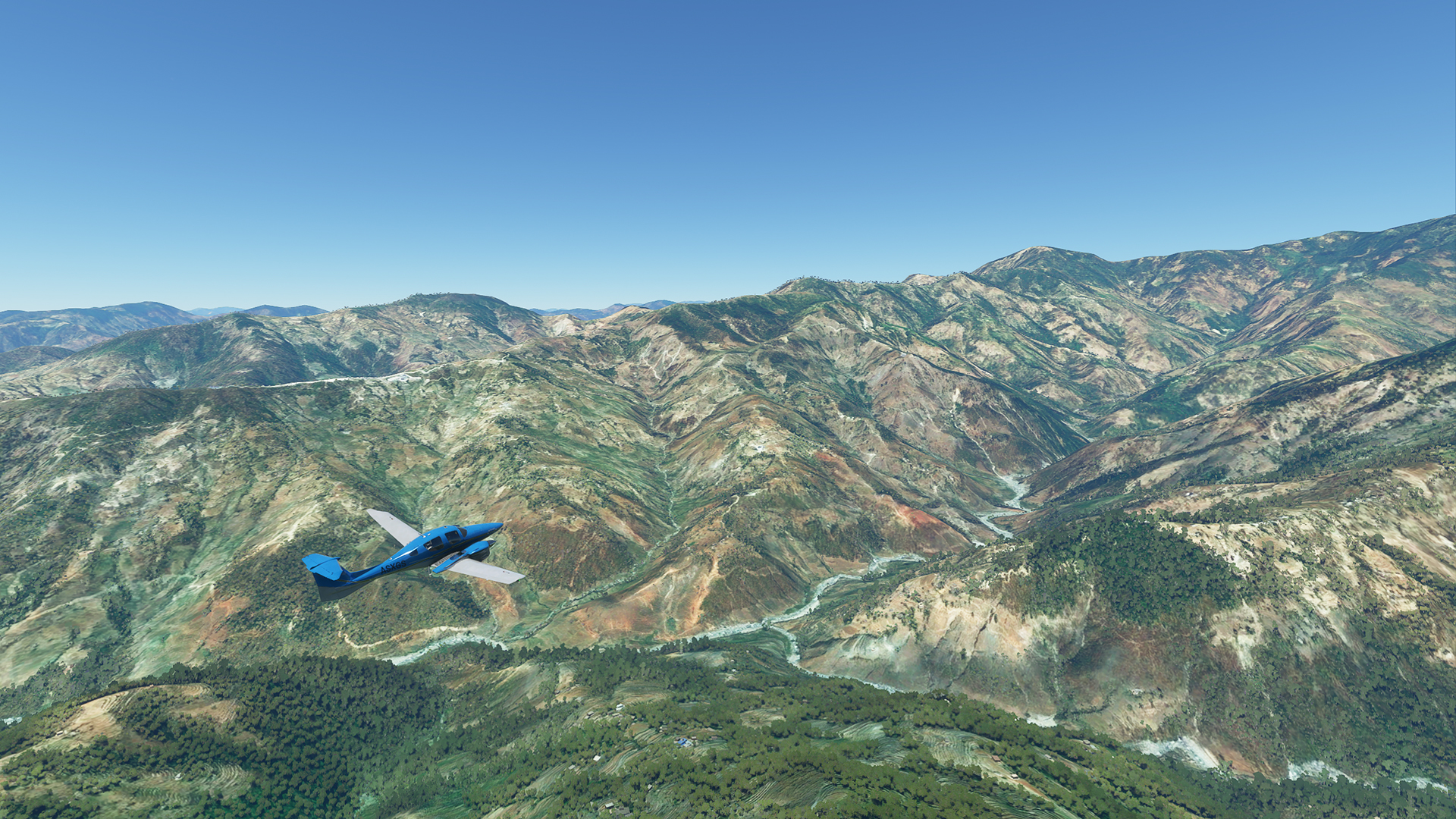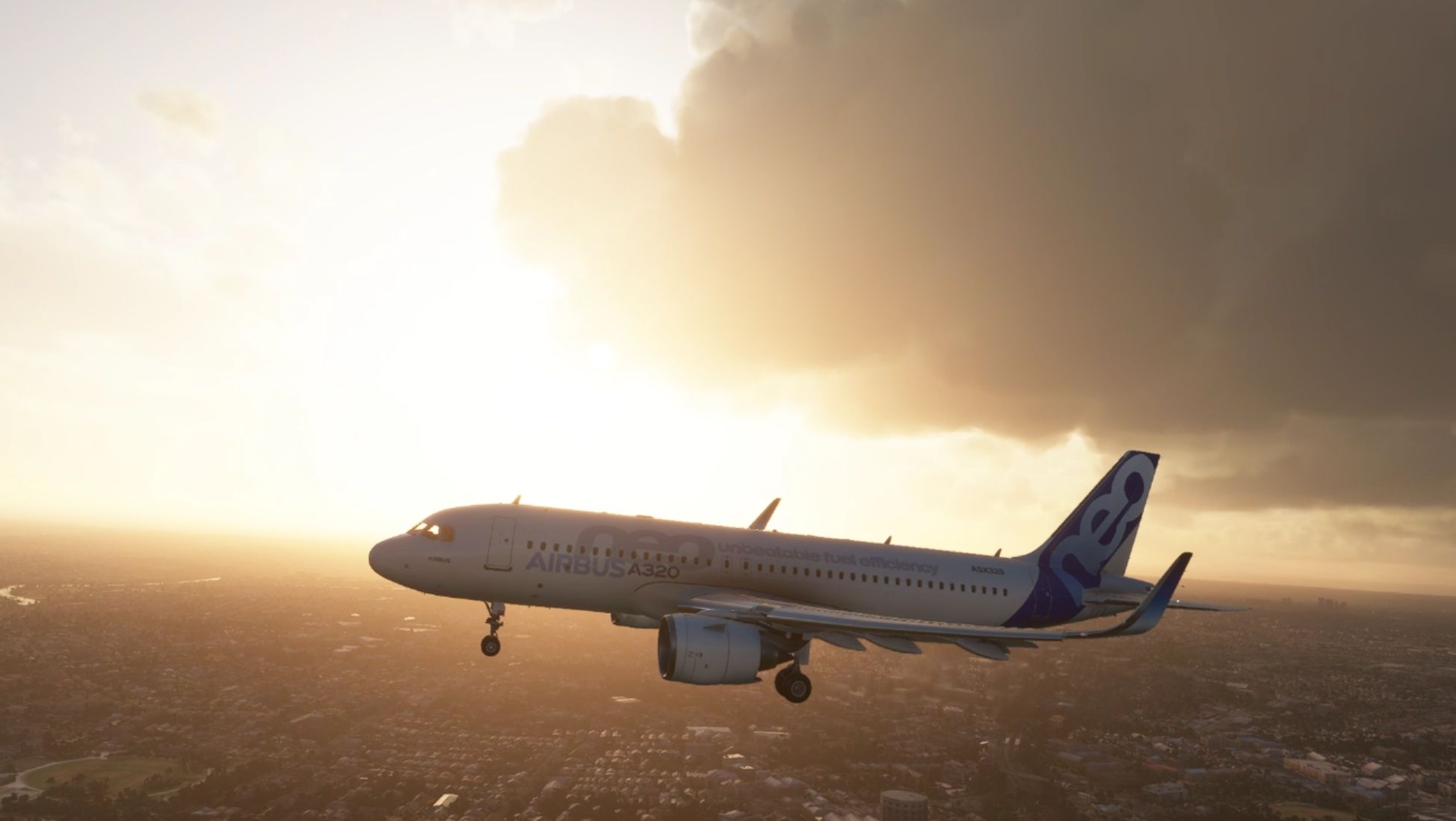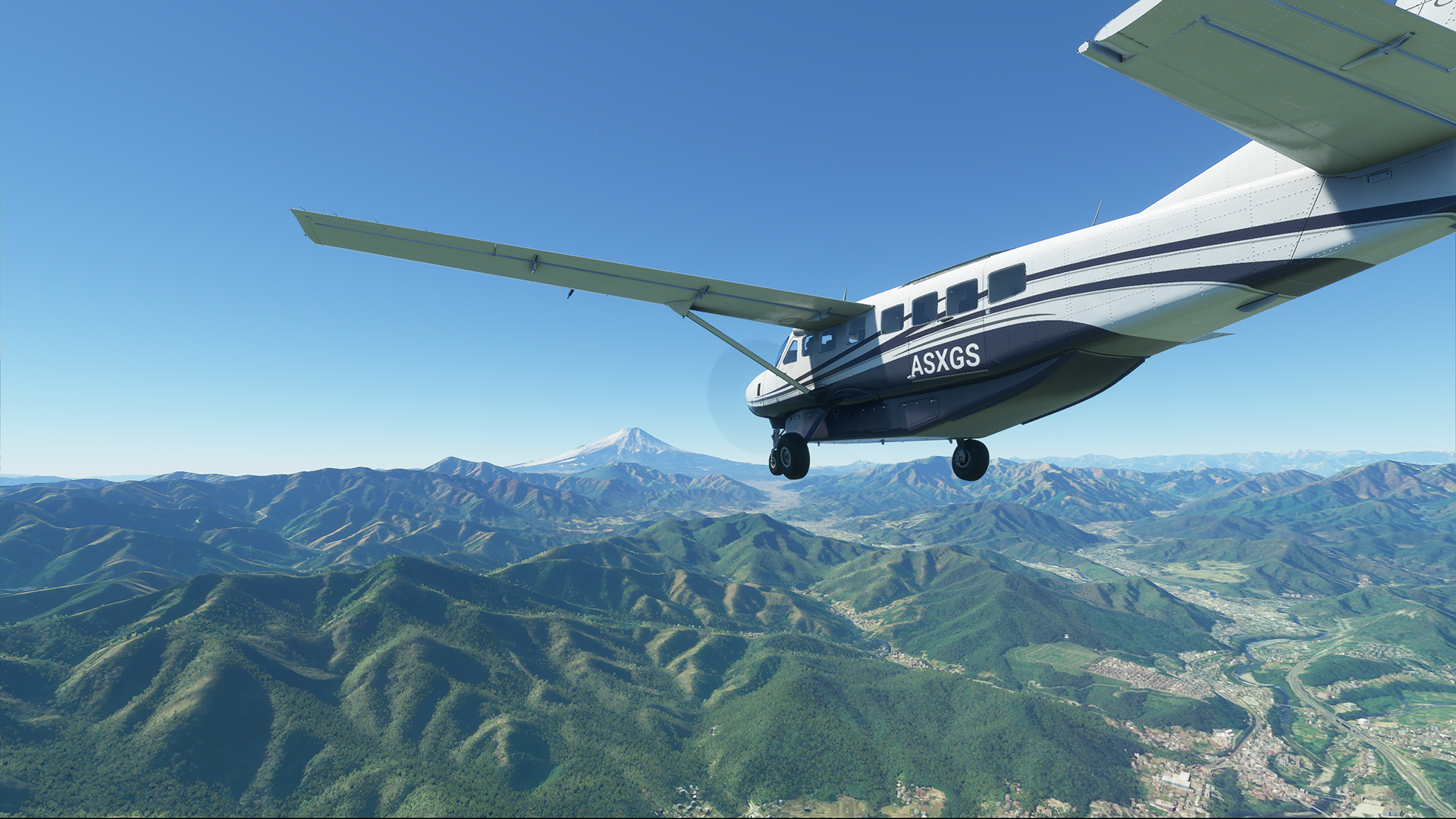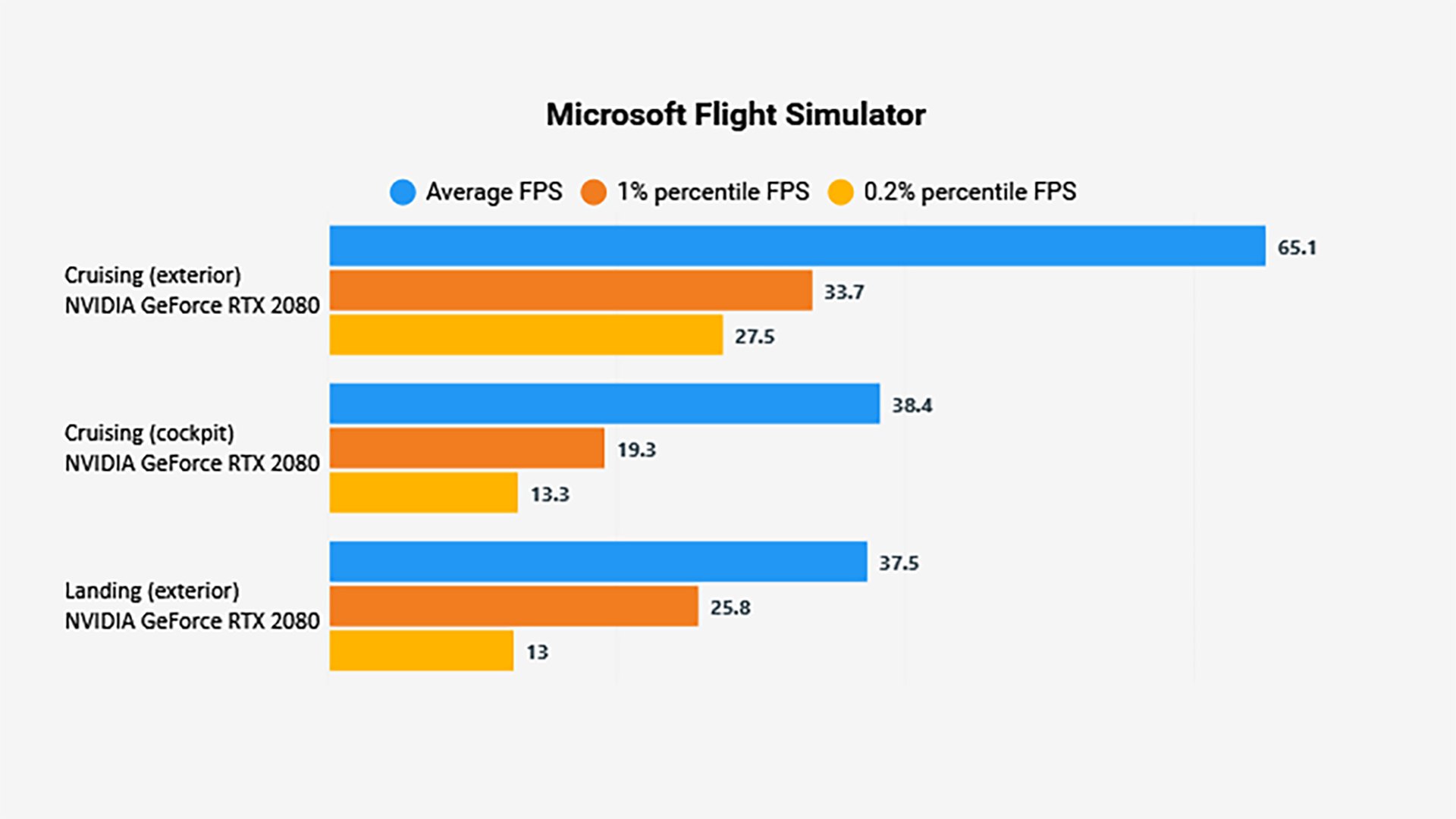The gaming hardware doesn't yet exist to make Microsoft Flight Simulator really shine
Microsoft Flight Simulator 2020 is in serious need of next-gen Nvidia Ampere and AMD RDNA 2 power.

Microsoft Flight Simulator 2020 is beautiful, entertaining, and astonishingly expansive—it's a game with no boundaries. An amalgam of modern technologies working together as one, the very concept of a simulation game as far reaching and detailed as this is one that few would have dreamed possible during development of the series' first incarnation, released way back in 1982.

A fantastic landmark with some issues you should know about. Read more in our Microsoft Flight Simulator review.
Perhaps that's why it's the closest I've felt a game to be truly something of a new breed in recent years. It has set the standard for PC gaming—a showpiece that serves to highlight what PC gaming is capable of—and it's not going to be easily toppled from its sky-high perch. Harnessing the power of the Azure cloud, photogrammetry data, and big data by the truckload, it is a living game to an extent unlike any other.
And perhaps that's why it demands gaming hardware unlike any around today.
Take my maiden voyage, for example. I'm convinced it's a pilgrimage most of us will share once more of you have graduated from flight school and are able to steer a flight plan solo. I travelled home, back to where I grew up, and it was exactly how I pictured it from a couple thousand feet up.
Topographical information serves to recreate every hill and mountain with immaculate accuracy, and satellite imagery mapping has meant that most of the larger features, roads, bridges, and even campsites are mapped to something close to the real thing. Yet I'm also aware that no employee of developer Asobo has probably ever traversed South Wales, nor mapped every tennis court in fine detail, nor walked a metre stick around the circumference of every field to get them just right. The accuracy to which my hometown has been recreated is the same level that the entire globe has been recreated.
And it's as demanding as it is great. The game pulls no punches with even high-end gear, although this should come as no surprise considering Flight Sim's 'ideal' specifications include an Nvidia RTX 2080, an eight-core CPU, 32GB of RAM, and a 50 Mbps download speed.
From my time with a review copy of Microsoft Flight Simulator, and a gaming PC that matches the ideal specs, I can attest to this game's overwhelming system demands.
The biggest gaming news, reviews and hardware deals
Keep up to date with the most important stories and the best deals, as picked by the PC Gamer team.

Performance is, as PC gaming is often wont to do, inconsistent. There's certainly some work to be done in order to minimise flight turbulence (frame drops, hangs, and the occasional texture pop-in), and it appears that even high-end components—from an RTX 2080 to RTX 2080 Ti—may sometimes appear sluggish.
It's just that sort of launch, I'm afraid.
Microsoft Flight Simulator 2020 performance

Yet these performance dips never once watered down my enjoyment. A surprisingly gentle ride, even in the most extreme of circumstances, perhaps it's the slow cadence of Microsoft Flight Sim that makes 1% lows of 26fps somewhat workable.
Test bench
CPU: Intel Core i7 9700K
GPU: Nvidia GeForce RTX 2080
RAM: 32GB Corsair Vengeance @ 2,666MHz effective
Storage: OS / 1TB WD Black SN750, Game / Addlink 1TB SATA
Motherboard: Asus Maximus XI Formula Z390
Monitor: Asus XG32VQ
Yeah, 26fps. And on an RTX 2080, no less—Flight Sim's own 'ideal' graphics card.
Flight Sim is a brutal glimpse of what 'next-gen' gaming might look like. Yet whereas the growing requirement for graphics performance or storage space with the latest games is often chalked up to a catch-all 'lack of optimisation' (not often the case but that's an argument for another time), Microsoft Flight Sim's demands are far less undeserving as some others may seem.
It's all right there in the gameplay: a resplendent and engrossing world, on an immense scale, which has been reproduced to the minute details.
And that's why Microsoft Flight Sim sits a cut above the rest. It's brutal, and it's got some launch day teething problems that are in immediate need of attention, but it's justified—Flight Sim is a videogame so unimaginable large and fully-realised, it's worthy of building an entire system around.
Microsoft Flight Simulator 2020 is beautiful, entertaining, and astonishingly expansive
If any game were deserving of a complete gaming PC build—and I don't make light of the privilege position that anyone would have to be in to build a gaming PC for a single game release—it would be Microsoft Flight Simulator 2020. Not only for its depth and detail, but also because of its true-to-life sim factor that will try and hook you for an entire rig: joystick, pedals, the lot.
Oh and don't forget an SSD, and a sizeable one at that. Microsoft Flight Simulator's load times are killer, and its installation is over 100GB. But at least you know you're getting an SSD's worth of content with Flight Sim—it's of planet-sized proportions.
So what graphics card will be able to deal with Flight Sim? If today's best graphics cards are barely breaking 60fps, and not even at the highest 'Ultra' preset, is this a game that's going to continue to break systems for generations to come? Nvidia Ampere and AMD RDNA 2 graphics cards are just over the horizon, but it feels like even a generous upgrade with these next-gen cards will fail to see them command Microsoft Flight Simulator at 4K.
Perhaps it was designed to be that way. Microsoft Flight Simulator 2020 wouldn't be the first game to include a top graphics preset exclusively catering to unreleased gaming hardware: Metro Exodus comes with one such setting, as do many others. With a shelf-life likely over a decade or longer, Flight Sim's got to plan ahead. And it's not a game that works by half-measures.
We may be doomed to chase the pixel-perfect horizon in Microsoft Flight Simulator 2020 for some time. But that's okay, the in-game possibilities are near-endless to keep us all engaged until then.
- Microsoft Flight Simulator 2020 controls: The full list

Jacob earned his first byline writing for his own tech blog. From there, he graduated to professionally breaking things as hardware writer at PCGamesN, and would go on to run the team as hardware editor. He joined PC Gamer's top staff as senior hardware editor before becoming managing editor of the hardware team, and you'll now find him reporting on the latest developments in the technology and gaming industries and testing the newest PC components.

